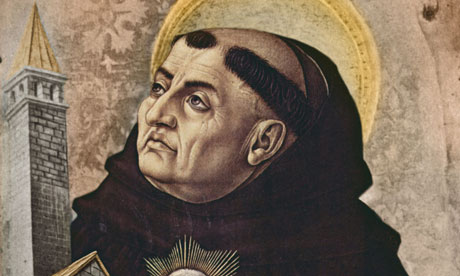In “The Case for Intersectional Theology: An Asian American Catholic Perspective,” just published in a special issue of the Journal of Moral Theology, Hoon Choi makes a persuasive case for recognizing intersectional analysis as a legitimate tool for theological method. I emphasize the word “theological” because Choi’s article suggests that intersectional analysis is not necessarily something extrinsically imposed on theology, but rather can be understood as intrinsic to theological method. The essay therefore represents an important contribution to what is undoubtedly one of the central debates over theological method today.
What is Intersectionality?
Before getting to Choi’s argument, I think it is important to define what we mean by intersectional analysis. Choi defines intersectionality in theology as the effort to “problematize Eurocentric bias and white supremacy and uncover/recover many marginalized groups by discovering multiple expressions of oppressive realities within theological circles” (p. 69). The term “intersectionality” was first developed by Kimberlé Williams Crenshaw to describe the multidimensionality of discrimination experienced by Black women, and has since come to express the insight that cultural patterns of oppression based on gender, sexuality, race, class, and nationality are intersected (p. 65). Choi adds that the Asian American experience helps makes clear the colonial dimension of these systems of oppression in the United States (pp. 66-67).
One of the most valuable aspects of Choi’s essay is his biographical account of how he came to recognize the importance of intersectional analysis for theological work through critical reflection on his own experiences as an Asian American scholar and teacher (pp. 63-65). Based on these experiences, he has come to understand that his vocation as a theologian includes bringing to the fore voices that have been marginalized, both in the tradition and in the contemporary Church, and uncovering the patterns of oppression that continue to exist in the Church and the theological academy. I wanted to briefly highlight that aspect of Choi’s essay because it skillfully shows how the use of theory can arise from reflection on concrete experience.
Criticisms of Intersectional Analysis in Theology
I want to focus, however, on how Choi’s essay contributes to ongoing debates over the role of intersectional analysis as part of theological method. The intersectional approach to theology that Choi gradually came to adopt is highly disputed. For one, Charles Camosy has argued that the use of intersectional analysis in theology represents the imposition of a form of discourse alien to theology. For example, according to Camosy:
[I]n the matrices of intersectionality, everything boils down to a struggle for power. A postmodern discourse of power, derived from a certain reading of Foucault, absorbs these theorists. . . . But Roman Catholics, who believe in the salvific nature of Christ’s death and resurrection and the continued work of the Holy Spirit in the world, cannot be at home in a discourse that requires the destruction of the perceived enemies of our identity.
Camosy likewise argues that intersectional analysis and similar theoretical approaches have become the dominant discourse in the academy, particularly the humanities and social sciences. Rather than enriching these disciplines, however, power analysis in terms of gender, sexuality, race, class, and nationality has overwhelmed their distinctive intellectual aims. He laments the “evacuation of theological content” in many Catholic theological departments as a result of this academic hegemony.
A second, related criticism, has been raised by Paul Griffiths in a 2014 plenary address to the Catholic Theological Society of America. Griffiths argued that intersectional or contextual approaches to theology bring a radical skepticism toward the Christian tradition that makes theology as a common pursuit impossible. Unless there is clarity on the Church’s doctrine as a starting point, then rational theological dialogue and disagreement is impossible. Likewise, Camosy adds:
For if the teaching authority and tradition of the Church are to be understood as hopelessly compromised by patriarchy, homophobia, and so on—such that they can and should be something other than central to the discourse—then a discipline other than theology is setting the terms of the practice.
Intersectional Analysis as a Theological Method
Although Choi does not explicitly aim his article at critics of intersectionality like Camosy and Griffiths, Choi’s essay offers a provocative rejoinder to these and similar arguments. Choi in effect asks the question: What if the use of intersectional analysis as a tool for theological reflection can be understood as an authentic development of the Church’s own doctrines and tradition? In other words, what if a proper understanding of the doctrines at the starting point of theological reflection demands something like intersectional analysis as part of our theological method? Choi appeals to Joseph Flipper’s notion of a liberationist form of ressourcement, the recovery of often marginalized voices of the faithful to provide a more complete understanding of the tradition. He draws three themes from the tradition to make his case: the sensus fidelium, the historical example of Thomas Aquinas incorporating secular knowledge into theological discourse, and the Incarnation of Jesus.
The Sensus Fidelium
Choi first points to the doctrine of the sensus fidelium, developed by the Church Fathers and reemphasized by the Second Vatican Council, which affirms that “the body of the faithful witnesses
the fact of tradition as revealed doctrine and becomes voices of the church” (p. 71). Choi turns to the example of Monica, the mother of St. Augustine of Hippo, a wife and mother of North African descent without formal education who nonetheless engaged in theological dialogues with Augustine and his peers, in some cases even resolving their disputes. Choi argues that even though this was not entirely recognized by Augustine (on whom we depend for these accounts), Monica’s experience of marginalization was crucial to how she received the gift of faith and her ability to express it. Choi goes on:
[J]ust as one can learn from the simple piety of Monica—a female person, a mother, situated in Northern Africa, marginalized in a patriarchal context—a great deal about faith and God, it is not hard to imagine a concerted gathering of knowledge of the faithful from a variety of vantage points—particularly of those neglected in the history of Christianity—and how they can enrich and inform faithful communities and the wider church. In any case, what is traditioned, then, is that the primary efficient cause of knowledge is God and what is traditioning is intersectional, that is, how the instinct of marginalized ordinary faith makes sense of that Cause. (p. 71)
He concludes that the intersectional consultation of the faithful and “their popular expressions, experience of the ordinary, and invaluable experience of oppression and marginalization” (p. 73) must be understood as part of the cooperation of all the faithful in tradition, or what we have now come to refer to as “synodality.”
Thomas Aquinas and Secular Sources
Choi next turns to the work of Thomas Aquinas as a paradigmatic example of the incorporation of secular knowledge into theological reflection. Aquinas famously incorporated the work of the ancient philosopher Aristotle into his theology, assimilating those aspects of his philosophy that helped deepen the understanding of Christian doctrines while rejecting other aspects that were incompatible with the Christian faith. Choi notes that even here Aquinas was not entirely successful and was in need of later correction. For example, Aquinas appropriated some of Aristotle’s misogynistic scientific views of women.
Choi sees Aquinas’s use of “secular sources” as itself a form of intersectionality, but it also represents a paradigm for understanding the use of intersectional analysis as a “secular source” by contemporary theologians. In the thirteenth century, there were indeed scholars who uncritically imposed Aristotle’s philosophy on Christian theology, leading to untenable conclusions, and others who rejected Aristotle out of hand. The integration of Aristotle into Christian theology was a decades-long process, and in fact one that arguably was never fully resolved. In the same way, there ought to be an ongoing dialogue among Christian theologians about the use of intersectional analysis and similar theories as tool for theological method, including openness to critiques of intersectional analysis as it is currently practiced.
The Incarnation and Intersectionality
Finally, Choi looks to the Incarnation of Jesus as a theological grounding for an intersectional approach. Choi writes:
[O]ne can argue that Jesus’s ministry—and indeed Jesus himself—is the embodiment of the point at which many areas of invisibility intersect: a Galilean Jew from lowly socio-economic status who caused disturbance at the Temple, disrupted the status quo, elevated the lowly, amplified the voice of the voiceless, and uplifted the dignity of victims from the systemic injustice of white ruling bodies, is as intersectional as it gets. (p. 80)
The intersectional identity of Jesus was not accidental, but rather essential to his mission. Taking it a step further, one might argue that the intersecting social locations that shape our experience as humans are existential elements of the human nature that Jesus Christ took on in the Incarnation. Choi argues, “To the extent that it is possible, then, theologians and the church must consume, embody, and carry out that body of Christ” (p. 80), the Body of Christ that recognizes and challenges intersecting patterns of oppression.
Conclusion
Choi therefore makes a case that, far from representing an extrinsic imposition on the theological task, the use of intersectional analysis as part of theological method is an authentic development of the Church’s tradition. The very doctrines that serve as the starting point for theology, in Choi’s telling, call for the ongoing re-assessment of the Christian tradition through the recovery of marginalized voices who form part of the sensus fidelium and through challenging the possible limitations of historical doctrinal and theological formulations.
I think Choi’s argument leaves open many important questions, as he himself would readily admit. For me, the most important is how to clarify the role of doctrine as a norma normans vis-a-vis secular sources of knowledge such as intersectional analysis while also recognizing that these secular sources of knowledge can play a norming role for theological discourse. But I think Choi’s essay does the valuable job of dispelling the notion that intersectional analysis assumes that the tradition or doctrines of the Church are “hopelessly compromised,” and making a case that Christian theological commitments themselves might be a source for turning to intersectional analysis or related forms of social analysis.






Trackbacks/Pingbacks